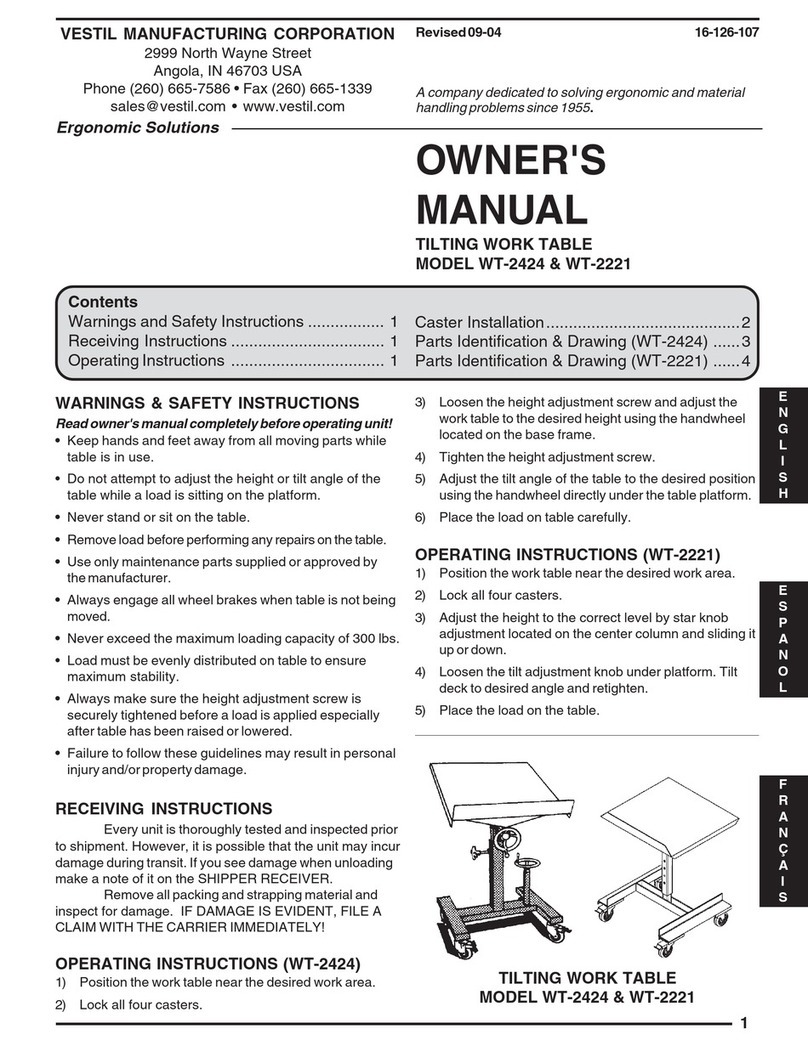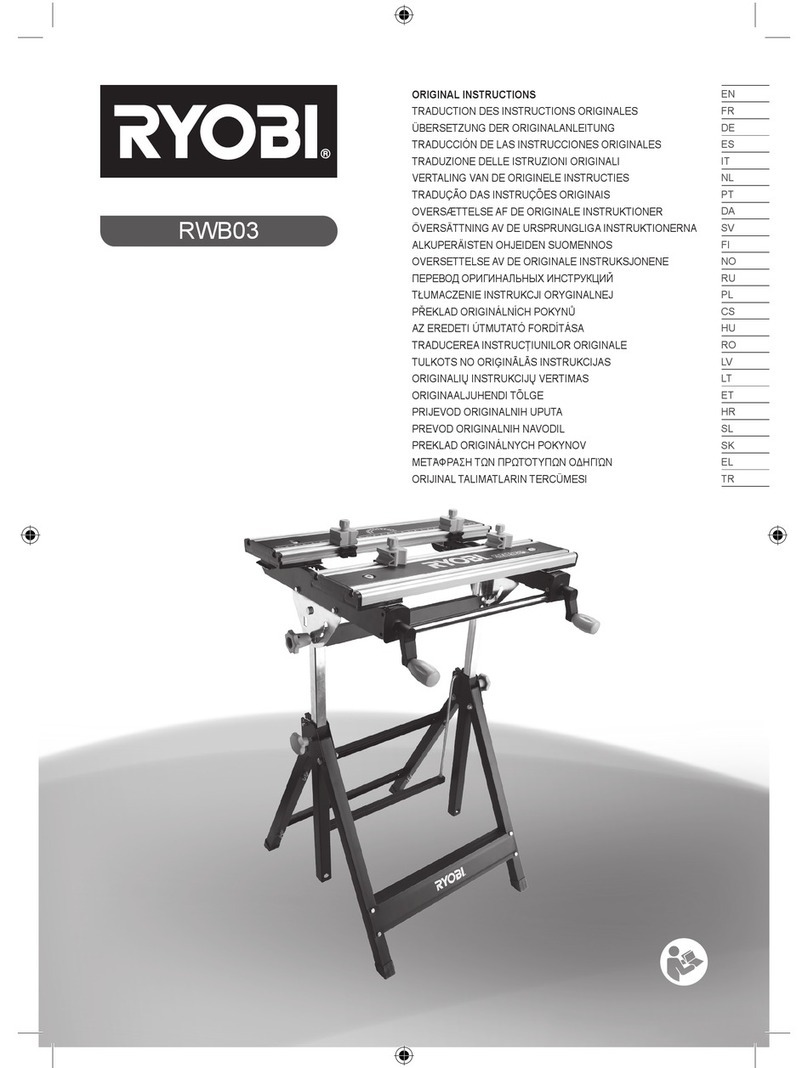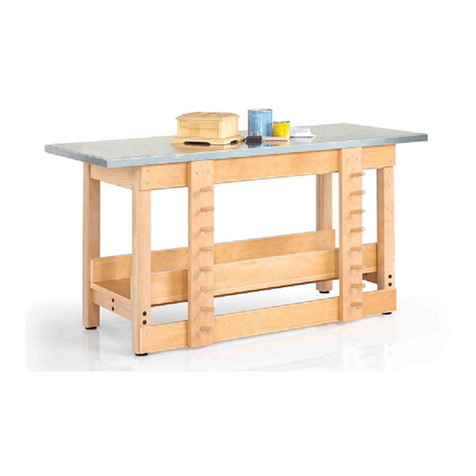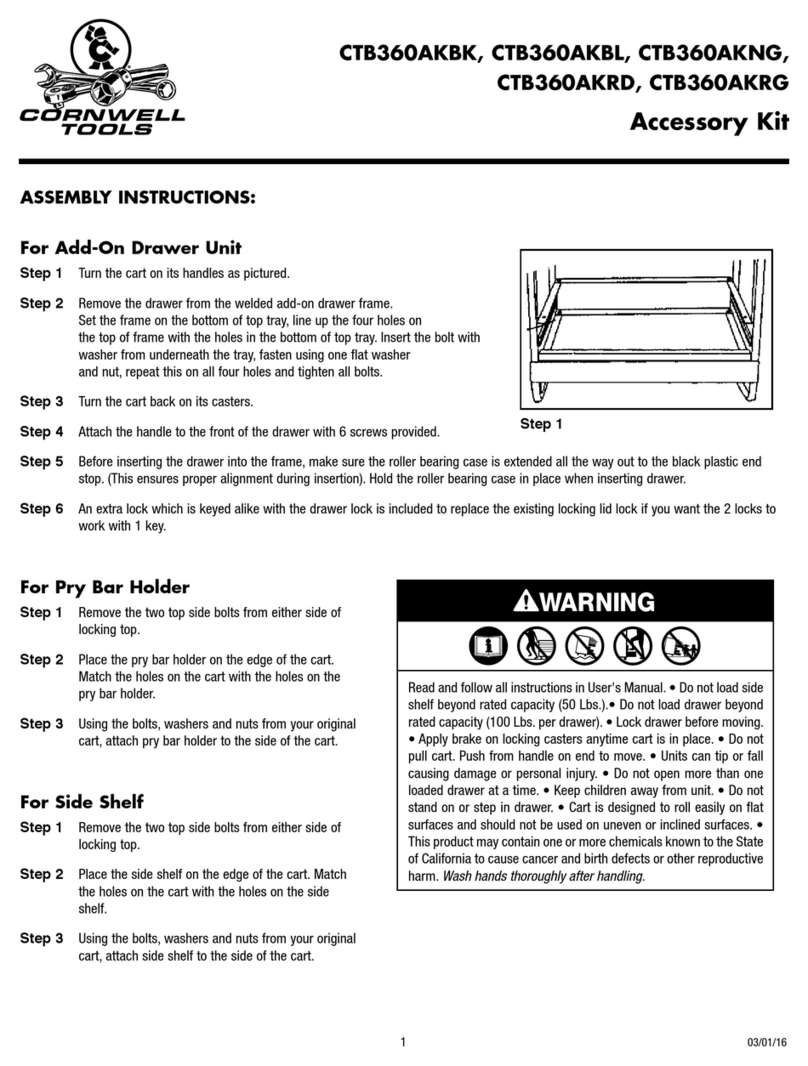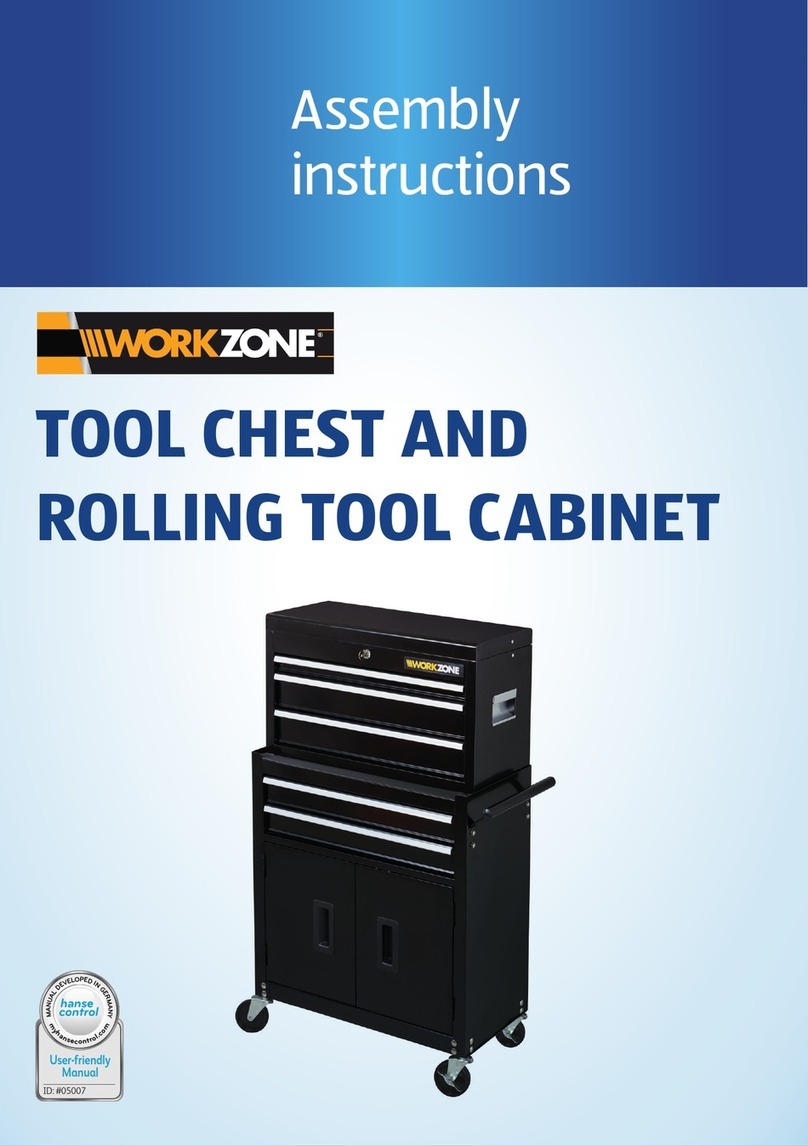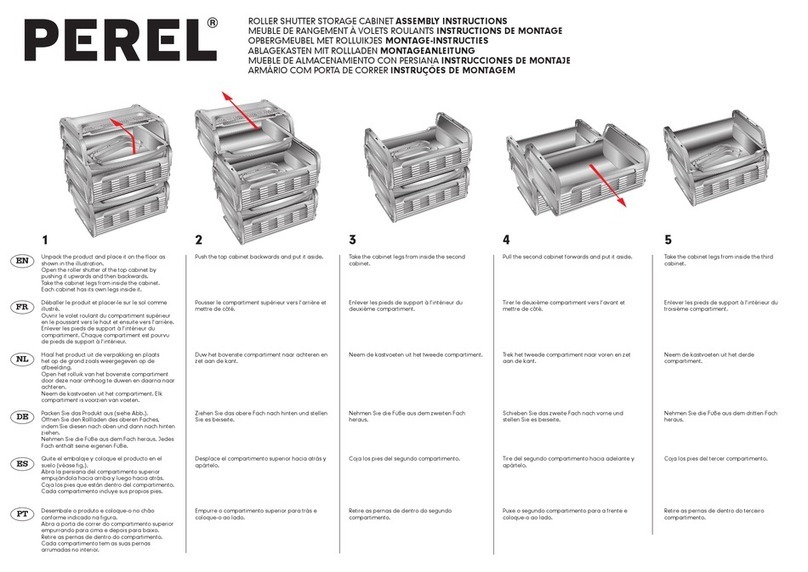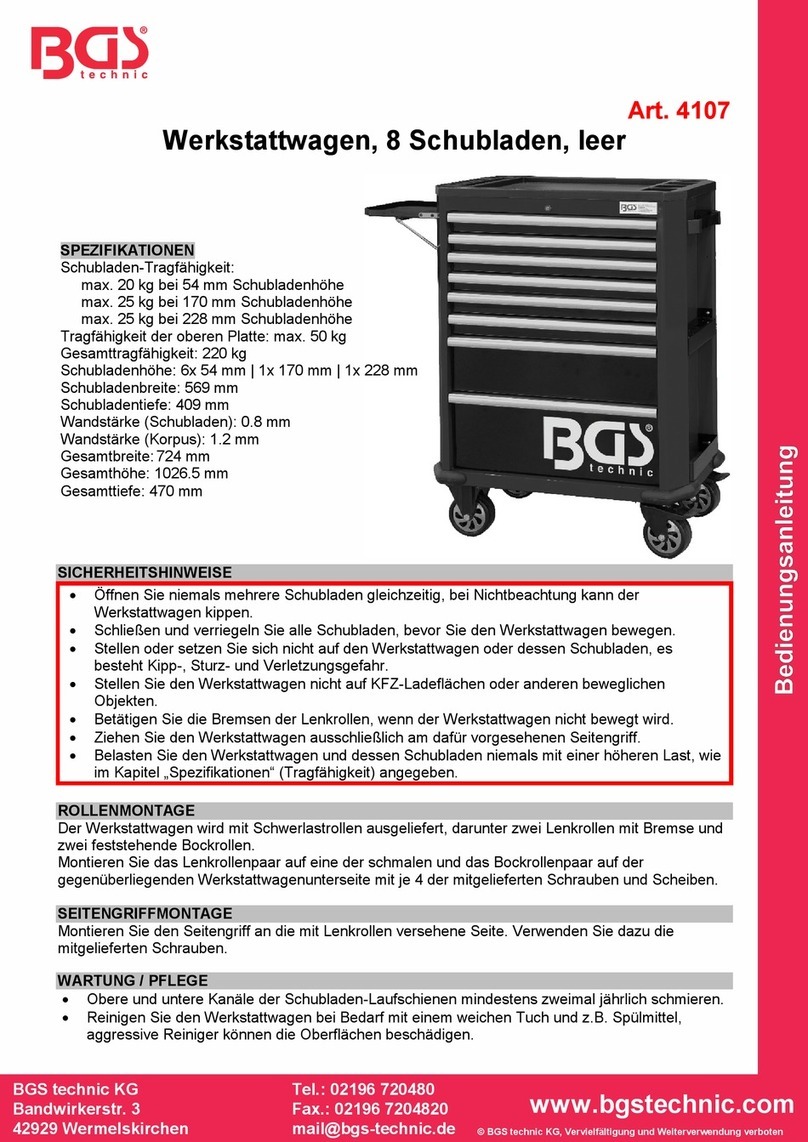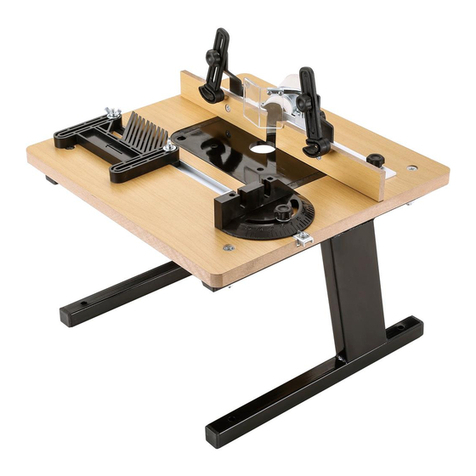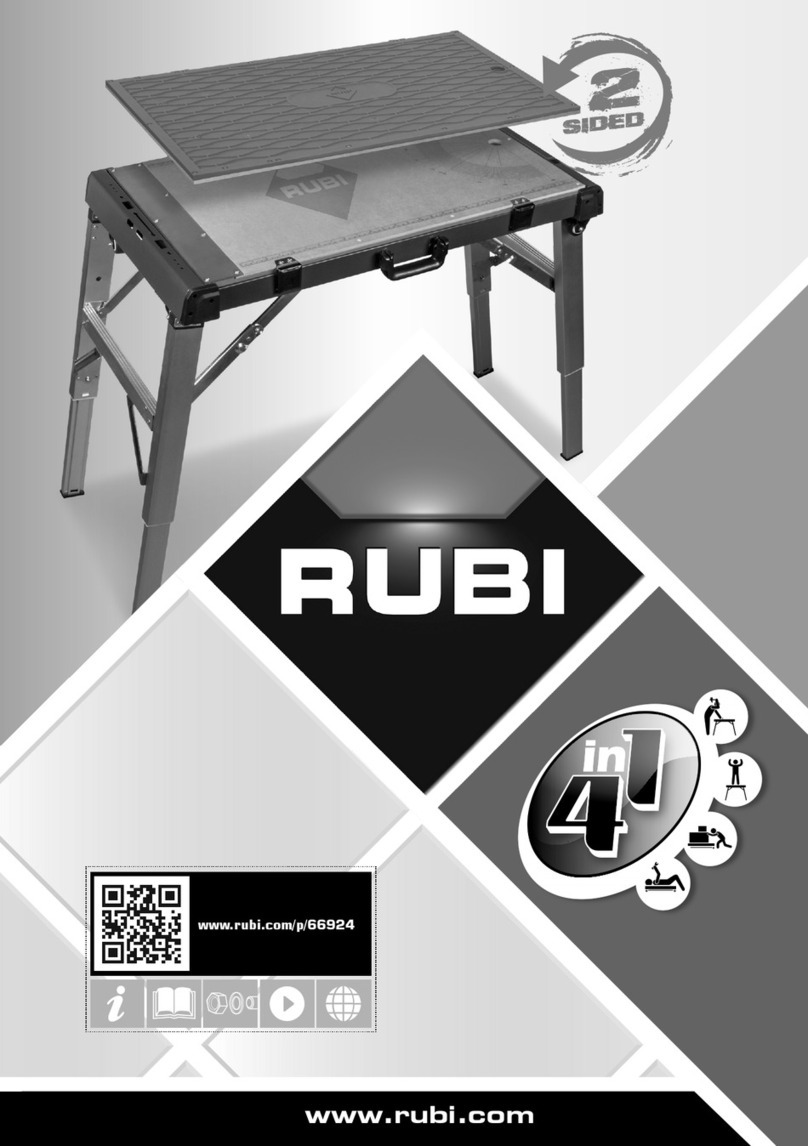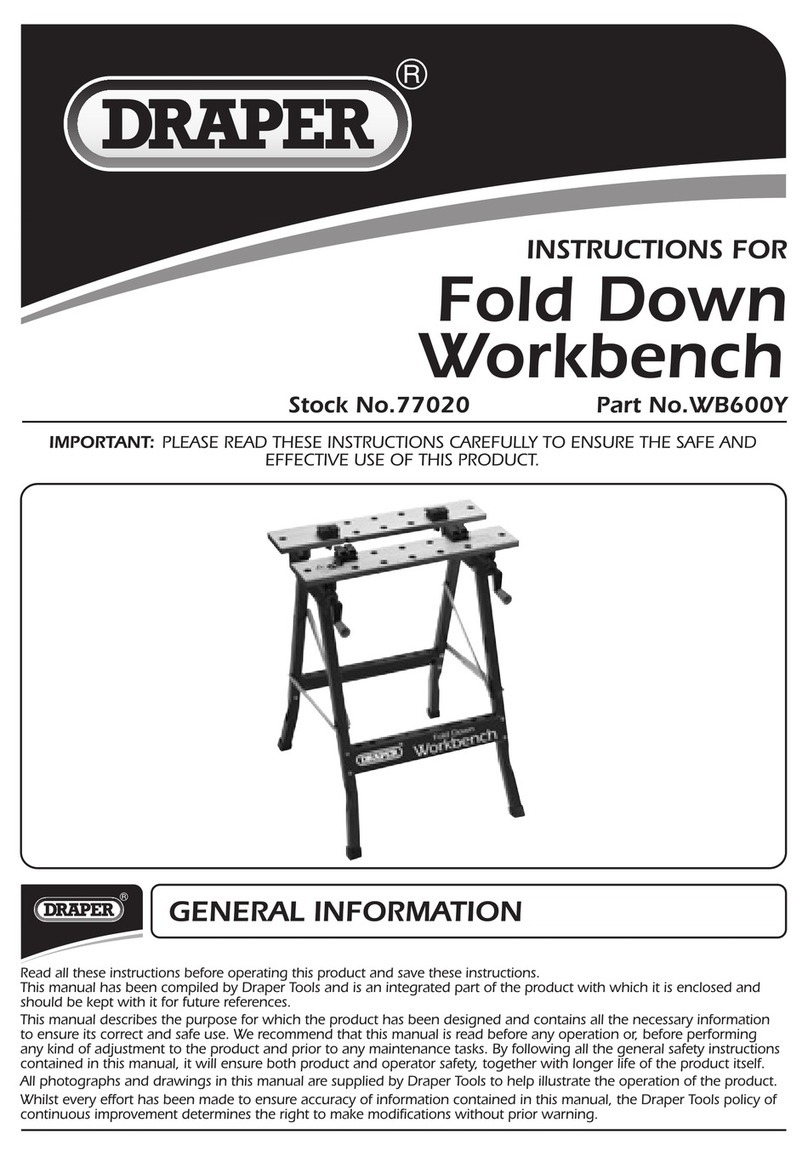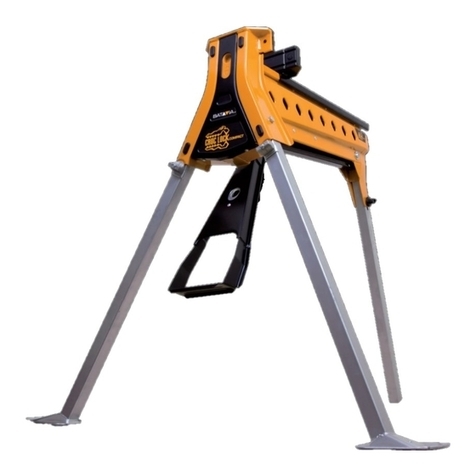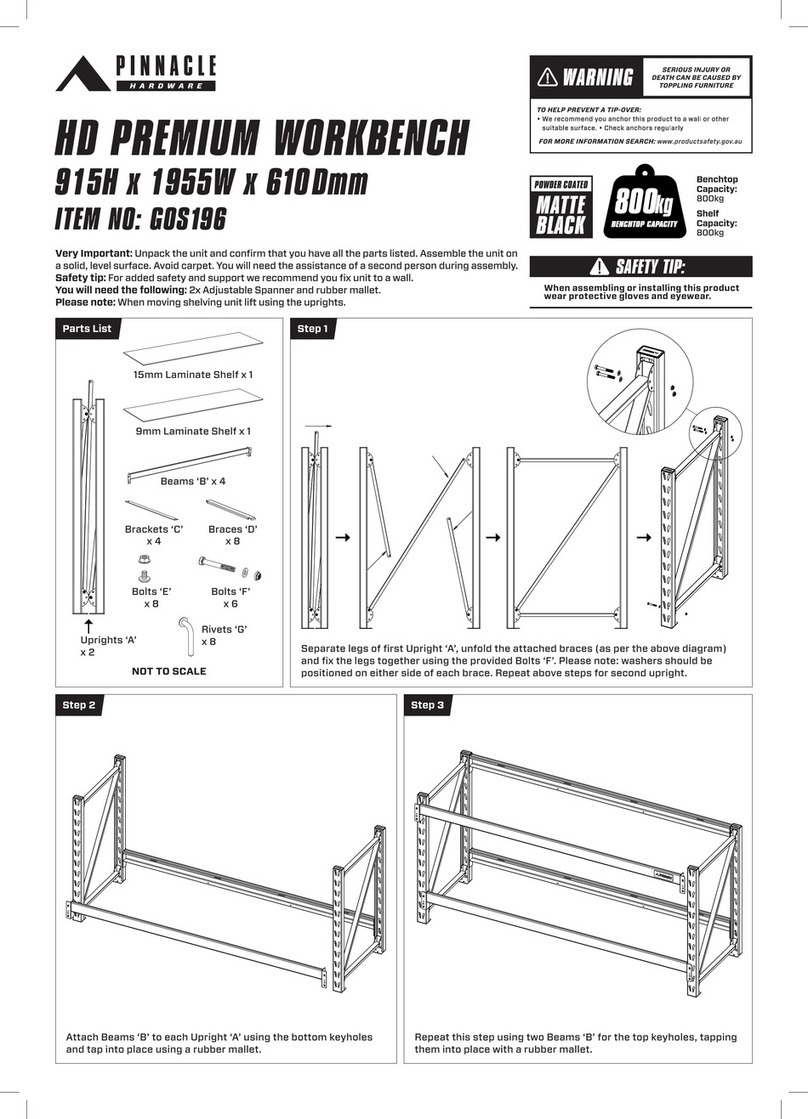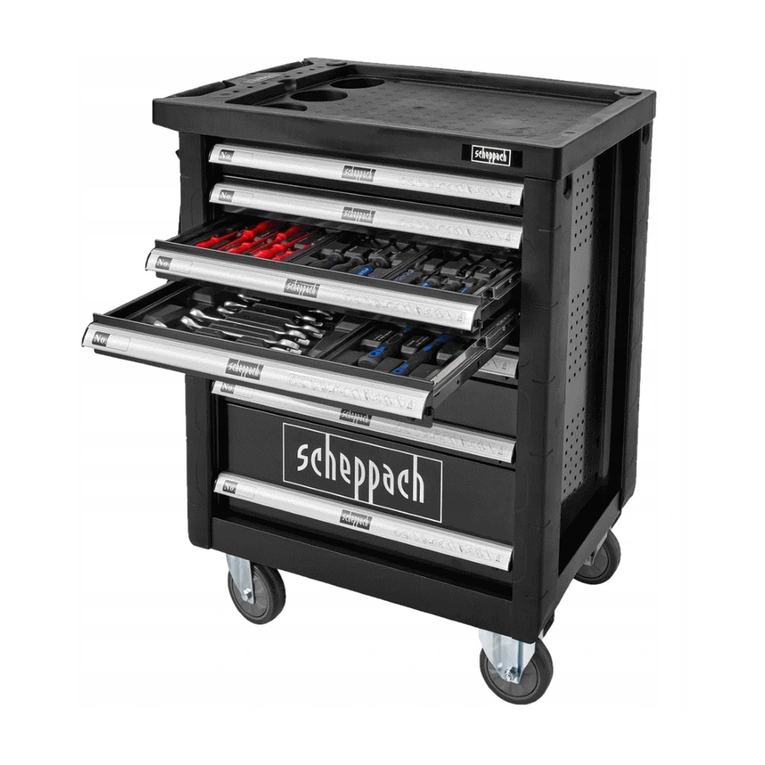INDEX
I. USER MANUAL / ENGLISH............................................................................................ 5
1PRESENTATION .................................................................................................................................................. 6
1.A WORKING TABLE............................................................................................................................................................6
1.B INTRODUCTION..............................................................................................................................................................6
1.C ACCESSORIES SUPPLIED WITH THE MACHINE ...............................................................................................................7
1.D TECHNICAL SPECIFICATIONS OF CS200 CART.................................................................................................................9
1.E OPTIONS.........................................................................................................................................................................9
1.F GUARANTEE ...................................................................................................................................................................9
2SETUP .............................................................................................................................................................. 10
2.A UNPACKING THE MACHINE..........................................................................................................................................10
2.BAIR LINE FITTINGS ........................................................................................................................................................11
2.C CONNECTING TO THE AIR SOURCE ..............................................................................................................................11
3ADJUSTMENTS................................................................................................................................................. 13
3.A ADJUSTMENT OF THE SLIDING TABLE..........................................................................................................................13
3.B PROPER ADJUSTMENT OF MAGNETIC ADJUSTABLE ROD CLAMP ...............................................................................13
3.C SPECIFIC USE OF THE SPACER BARS .............................................................................................................................14
3.D SELECTING THE WEDGES POSITIONS ...........................................................................................................................15
3.E THREE ESSENTIAL RULES ..............................................................................................................................................15
3.F ADJUSTING THE JOINING ANGLE .................................................................................................................................15
3.G MEANS OF JOINING .....................................................................................................................................................16
3.H LOADING OF THE WEDGES ..........................................................................................................................................16
3.I CHANGING WEDGES SIZE .................................................................................................................................................17
3.J SETTING THE SHOOTING POSITIONS ................................................................................................................................17
4JOINING THE FRAME ........................................................................................................................................ 19
5MAINTENANCE ................................................................................................................................................ 20
5.A SAFETY INSTRUCTIONS.................................................................................................................................................20
5.B MAINTENANCE PLAN ...................................................................................................................................................20
5.B.a Daily maintenance:.....................................................................................................................................................................20
5.B.b Regular maintenance:.................................................................................................................................................................20
5.B.c Every 6 months:..........................................................................................................................................................................21
5.C REMOVING THE DISTRIBUTOR HEAD...........................................................................................................................21
5.D LUBRICATING THE DISTRIBUTOR HEAD .......................................................................................................................22
5.E UNJAMMING THE MACHINE........................................................................................................................................22
5.F OPENING THE SIDE PANEL ...........................................................................................................................................23
5.G LUBRICATING THE HORIZONTAL COLUMNS ................................................................................................................23
5.H TESTING THE SAFETIES OF THE MACHINE....................................................................................................................24
5.I TROUBLE SHOOTING ........................................................................................................................................................24
II. MANUEL D’UTILISATION / FRANCAIS......................................................................... 26
1PRESENTATION ................................................................................................................................................ 27
1.A TABLE D’ASSEMBLAGE ................................................................................................................................................27
1.B INTRODUCTION............................................................................................................................................................28
1.A ACCESSOIRES FOURNIS AVEC LA MACHINE .................................................................................................................28
1.B SPECIFICATIONS TECHNIQUES .....................................................................................................................................30
1.C OPTIONS.......................................................................................................................................................................30
1.D GARANTIE.....................................................................................................................................................................30
2MISE EN ROUTE................................................................................................................................................ 31
2.A DEBALLAGE DE LA MACHINE........................................................................................................................................31
